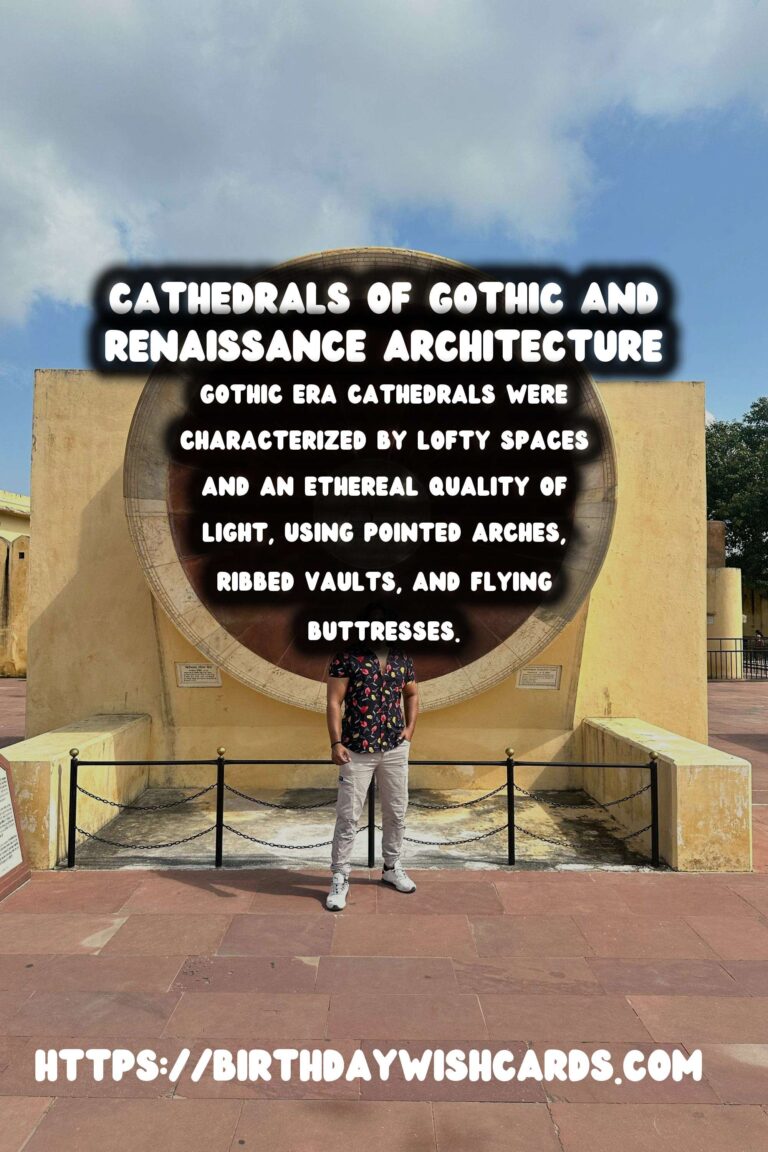
The journey through architecture’s evolutionary path is a fascinating one, particularly when it comes to the majestic cathedrals that have graced our world. From the pointed arches and ribbed vaults of Gothic architecture to the symmetry and harmony of Renaissance design, cathedrals tell a tale of human ingenuity, artistic expression, and religious fervor.
The Gothic Era: A Symphony in Stone
The Gothic era, spanning from the 12th to the 16th centuries, marked a significant departure from the heavier Romanesque style. Characterized by lofty spaces and an ethereal quality of light, Gothic cathedrals were engineered with cutting-edge techniques and aspirations. The use of pointed arches, ribbed vaults, and flying buttresses allowed for unprecedented height and structure, creating spaces that seemed to reach up toward the heavens.
Key features of Gothic cathedrals include their expansive stained glass windows, which not only filled the interior with colorful light but also served as biblical storybooks for the largely illiterate population. Notable examples include the iconic Notre-Dame de Paris and the Chartres Cathedral, each a testament to the era’s architectural ambition and artistic flair.
The Renaissance: Revival of Classical Ideals
In contrast, the Renaissance period heralded a revival of Classical ideas, emphasizing proportion, balance, and harmony. This era, stretching from the 14th to the 17th centuries, saw a shift towards more human-centered spaces. Architects like Filippo Brunelleschi and Leon Battista Alberti drew inspiration from the ancient Roman and Greek worlds, reintroducing elements such as columns, domes, and semicircular arches.
Renaissance cathedrals were characterized by their symmetry and geometric precision. Florence Cathedral, with its impressive dome engineered by Brunelleschi, and St. Peter’s Basilica in Vatican City, exemplify the Renaissance commitment to both artistic beauty and structural innovation.
Gothic to Renaissance: A Transition of Tastes
The transition from Gothic to Renaissance architecture was not merely a shift in style but also a reflection of broader cultural changes. While Gothic cathedrals were often associated with the fear of God, Renaissance architecture celebrated the glory of man and the potential of human achievement. This ideological shift mirrored developments in art, science, and philosophy during the Renaissance.
This transition was gradual, with hybrid styles emerging as architects experimented with integrating Gothic elements into Renaissance ideals. Such synthesis can be seen in buildings like the Milan Cathedral, which displays both Gothic spires and Renaissance statutes.
Conclusion: A Testament to Human Creativity
The architectural history of cathedrals from the Gothic to the Renaissance period is a narrative of change, adaptation, and human creativity. As we stand in awe of these monumental edifices, we are reminded of their stories, not only of religious devotion but of the evolution of architectural practices that continue to inspire modern designs.
Today, these cathedrals remain as educational touchstones and cultural landmarks, drawing visitors from around the world to marvel at their beauty and contemplate the era’s enduring impact on art and architecture.
The journey through architecture’s evolutionary path is a fascinating one, particularly when it comes to the majestic cathedrals that have graced our world. Gothic era cathedrals were characterized by lofty spaces and an ethereal quality of light, using pointed arches, ribbed vaults, and flying buttresses.
#architecture #cathedrals

